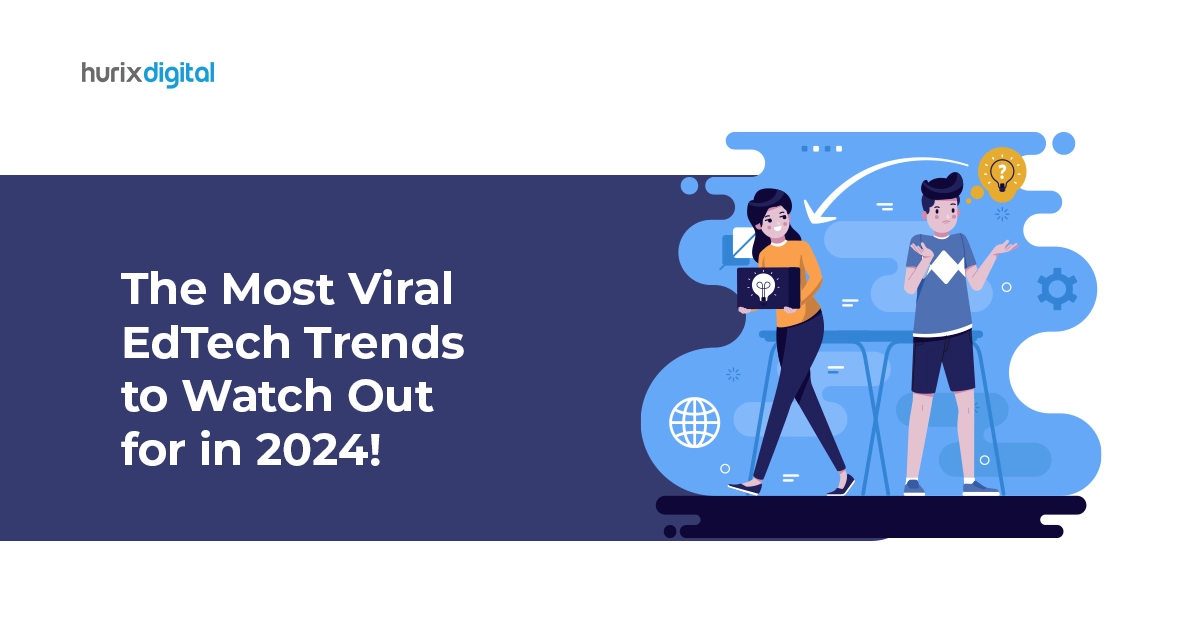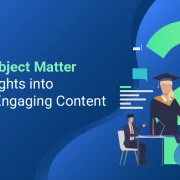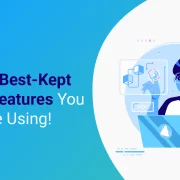
The Most Viral EdTech Trends to Watch Out for in 2024!
Summary
Stay updated on the most viral trends in educational technology and how they are shaping the future of teaching and learning.
You can no longer stay on the fence about the revolutionary ideas, notions, and principles guiding the state of learning today.
Education is in a constant state of flux, driven by the capacity of educators to reinvent the learning environment constantly. Students need to evolve in their ability to embrace the learning process, whether it’s a shift in mindset or adopting new learning models and approaches.
The future of education is linked to the present, and we can see trends rapidly catching up as new technologies emerge, and productive techniques help learners advance and learn faster than ever.
Today, it’s no longer about the next big splash but more about how the education sector is shaping up for society’s progress at the microcosm level. Let us explore trends in education together and see how they will pan out in 2024.
Table of Contents:
- 2024: A Year of Promise for Education
- Watch Out for These 5 Key Trends in the Education Sector in 2024
- Key Takeaways
2024: A Year of Promise for Education
The coming year will have us witnessing massive changes in the educational sector, with the collective good of technological advancements at work. You will be able to see the peak of transformation and note the key trends in helping students stay focused and motivated to study with engaging tools and techniques.
One such methodology is online or digital learning.
It’s remarkable to observe the growth of the e-learning market, with revenue forecast to reach 462.6 billion dollars in 2027. The natural integration of technology into the field of education has opened doors to new possibilities like massive online open courses (MOOCs) and remote learning as students benefit from a wide variety of resources available at their fingertips.
More than innovations, it’s about the access and equitable nature of education that are necessary to equip students with the skills of tomorrow. Educational institutions are moving ahead from traditional modes of teaching and have taken leaps and bounds with online learning platforms, support tools, and assistants that can facilitate learning on the go.
Also Read: 15 Best Online Learning Platforms in 2024
Watch Out for These 5 Key Trends in the Education Sector in 2024
The information revolution is upon us, and so are trends that are paradigm-shifting and setting benchmarks as we speak. Educators are becoming more receptive to change and hopeful for trends to turn into catalysts that will directly influence education in 2024.
Let’s dive further into these exploratory outcomes:
1. Community-Based Intervention: Self-Directed Learning
Children have an innate ability to learn and are born curious about the world around them. However, conventional learning paths have stifled their learning abilities by forcing them to stay on a path of standardized curricula, grading systems, and communication design.
This can be very demotivating for students who don’t understand the one-size-fits-all approach. Here is where empowering students with a more hands-on learning experience that isn’t defined by learning curricula and where the students are free to explore educational concepts with real-world examples is beneficial.
Micro schools are one such innovative teaching method employed by teachers to propagate community-based learning at a personalized level.
2. Technology Embedded Deeply into Learning Models
Technology is no longer confined to the walls of the classroom. It has penetrated the beyond-the-classroom experience for educators and learners alike.
Various learning models, like flipped classrooms and blended learning, are greatly impacted by the role of technology like virtual reality, artificial intelligence, and machine learning algorithms.
STEM (Science, Technology, Engineering, and Mathematics) education is closely linked to how students can use critical thinking and problem-solving abilities to understand the courses and develop an interest early on. AI-enabled platforms have grown in popularity, where focused attention can be provided to struggling students, and gaps in learning can be identified in an instant.
For instance, Dictera, developed by Hurix Digital, is an excellent example of how AI can empower you to make efficient data-driven decisions and manage workflows at your pace.
Here’s a video to learn more about the tool and its capabilities:
3. Rising Popularity of Nano Learning
With dwindling attention spans and the ever-increasing need for engaging content, students are moving towards bite-sized content in the form of videos, podcasts, audio snippets, and flipbooks, which are energy- and time-effective.
It’s been a long time since Gen Z entered the marketplace of education, vying for educational content that is inclusive and accessible. Their preferences are clear, visually appealing content that adds value to the narrative and can be consumed as quickly as they come—seconds rather than minutes.
Progressive learning choices are being made by educators in their medium of instruction, with more focus on interactive knowledge generation.
4. Social Networking Learning Opportunities
Social networking sites like Instagram, Facebook, Twitter, YouTube, and so many more have come a long way. Social networks have made it even easier to connect, share ideas, and discuss topics openly and honestly.
After all, learning is multi-faceted and has always been a social activity deeply rooted in collaboration and knowledge sharing.
Social networks will become more important than ever in the classroom as teachers use them to engage students in learning activities, share resources, and collaborate on projects together.
Teachers can also use these sites as bulletin boards and discussion forums to encourage real-time feedback and share insights on various important topics in the lesson plans.
5. Experiential Education and Adaptive Learning
We’re seeing a shift toward experiential learning—teaching students through hands-on experience instead of just through textbooks and lectures. This can take many forms, from field trips to internships to service projects.
This kind of teaching allows students to apply what they’ve learned in real-world situations and helps them retain information better than traditional teaching methods do.
Adaptive learning is based on the idea that every student learns differently and at their own pace, so teachers should use different methods to reach each student individually.
Such a form of self-paced learning can prepare students for jobs in the future and equip them with skills that develop their resilience and skills.
Also Read: Top Emerging Trends in Educational Technology That Will Have Major Impact
Key Takeaways
We cannot predict the future, but we can certainly imagine it. And we are confident that the future of education is bright!
There are so many opportunities in the digital learning space for companies to capitalize on, and there are plenty of trends to watch out for.
At Hurix Digital, we believe that these major influences on the education sector affect your classroom, students, and work as educators in different ways. These predictions will make a difference as we look back on our current levels of technology integration, personalized learning, and even the way we think about assessment.
From learning about culture online to designing their apps, students will have many opportunities to explore their interests and expand their knowledge. Are you ready for a lesson from the future? Contact us today!





